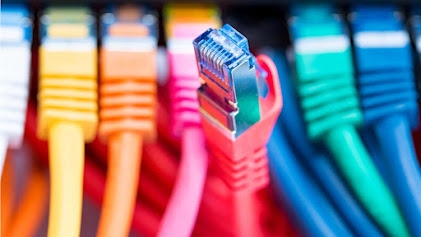Green Sustainable Practices For Network Cabling In Australia
In today's fast-paced world, businesses are striving for efficiency and productivity and seeking environmentally responsible solutions. As technology continues to play a crucial role in daily operations, the demand for network data cabling is on the rise. However, in a time where sustainability is at the forefront of global concerns, it is essential for Australian businesses to consider eco-friendly options for their network cabling installations. This blog explores the concept of "Green Cabling" and how sustainable practices can be implemented in this domain.
What is Green Cabling?
Green cabling, also known as eco-friendly cabling or sustainable cabling, is an approach to network data cabling that emphasizes reducing its environmental impact. It involves using materials and practices that minimise energy consumption, waste generation, and harmful emissions. The goal is to create a more efficient, long-lasting, and environmentally responsible infrastructure while meeting all standard prerequisites of networkdata cabling installation services.
Benefits of Green Cabling:
Energy Efficiency: Green cabling solutions focus on reducing power consumption by using energy-efficient materials and technologies. This not only lowers operational costs for businesses but also reduces their carbon footprint, contributing to a more sustainable future.
Waste Reduction: Sustainable cabling practices prioritize the use of recyclable and biodegradable materials. By minimizing waste generation and promoting responsible disposal, businesses can significantly reduce their contribution to landfill and environmental pollution.
Longevity and Durability: Green data cabling installation services often incorporate high-quality, durable materials that have a longer lifespan. This means fewer replacements and less frequent maintenance, ultimately reducing the overall environmental impact.
Enhanced Performance: Sustainable cabling solutions are designed to optimize network performance, ensuring efficient data transmission and minimal signal loss. This improved performance not only benefits the business but also reduces the energy required to maintain network operations.
Implementing Green Cabling in Australia:
Choosing Environmentally Friendly Materials: Opt for cabling products that are made from recycled materials or those that can be easily recycled at the end of their life cycle. Additionally, consider products with eco-friendly coatings and insulation.
Energy-Efficient Equipment: Use networking equipment, such as switches and routers, that have high energy-efficiency ratings. This helps to minimize power consumption and heat generation, contributing to greener network infrastructure.
Proper Cable Management: Organized cable management not only improves network performance but also reduces the likelihood of cables getting damaged or tangled. Neatly organized cables are easier to maintain and less likely to be replaced prematurely.
Adopting Renewable Energy: Consider powering your network infrastructure using renewable energy sources, such as solar or wind power. This can significantly reduce the environmental impact associated with energy consumption.
Regular Maintenance and Upgrades: Proper maintenance ensures that your network cabling continues to function optimally, reducing the need for replacements. Regularly upgrading outdated components can also enhance energy efficiency and performance.
As the world moves towards a more sustainable future, businesses in Australia have a unique opportunity to contribute to environmental preservation through green cabling practices. By prioritizing energy efficiency, waste reduction, and durable materials during network installation, Australian companies can reduce their ecological footprint while enjoying the benefits of a high-performance network. Embracing green cabling not only aligns with corporate social responsibility but also paves the way for a more environmentally conscious and technologically advanced business landscape in the country.




Comments
Post a Comment